As I walk up my drive way to the mailbox I marvel at the nature all around me.
I stop to watch a lizard sensing my presence, sees me and scurries away. I see a hummingbird moving its beak deep into a red flower that is reflecting its color into the birds shimmering iridescent breast feathers. A breath taking experience I witness many times in my dreams
What does this have to do with truth in photography?
The camera is capable of capturing images in nature that are as true as the film and tools at the time are capable of rendering an image by a sighted photographer. Oh! I should have said before the event of Photoshop. But, I dare say the image is never as vivid as what I saw in my minds eye or my dreams when taking the picture.
Many brave photographers venture in war zones and capture images that reveal painful images of the never ending wars humans create as a never ending reminder of the sadistic nature of humans. If the photographers moral rudder is true the we may consider the image a representation of truth.
I realized very early in my career as a photographer that I was most interested in creating worlds that excited my imagination.
I was always uneasy taking pictures of people who were unaware that I was photographing them. I felt it was an invasion of their privacy. Street photography was not my thing although many of the street images I did take were considered with esteem.
I was most interested in creating worlds. I would imagine an image. And then create it in reality. Which entailed designing and building the set and then photographing the imagined image.
When I was invited to join Harpers Bazaar, the art director Henry Wolf allowed me to shoot anything that pleased me. The first few years were a thrilling ride.
I would shoot a series if pictures and they were published, many times, with unease from upper management.
After shooting the Paris 1963-1965 Bubble and Fly series many letters from subscribers writing glowing reports about my pictures. I was trusted to have greater freedom.
The following years demands from upper management, called for a more collaborative atmosphere. This loss of freedom made it difficult to participle which in turn in stymied my output.
